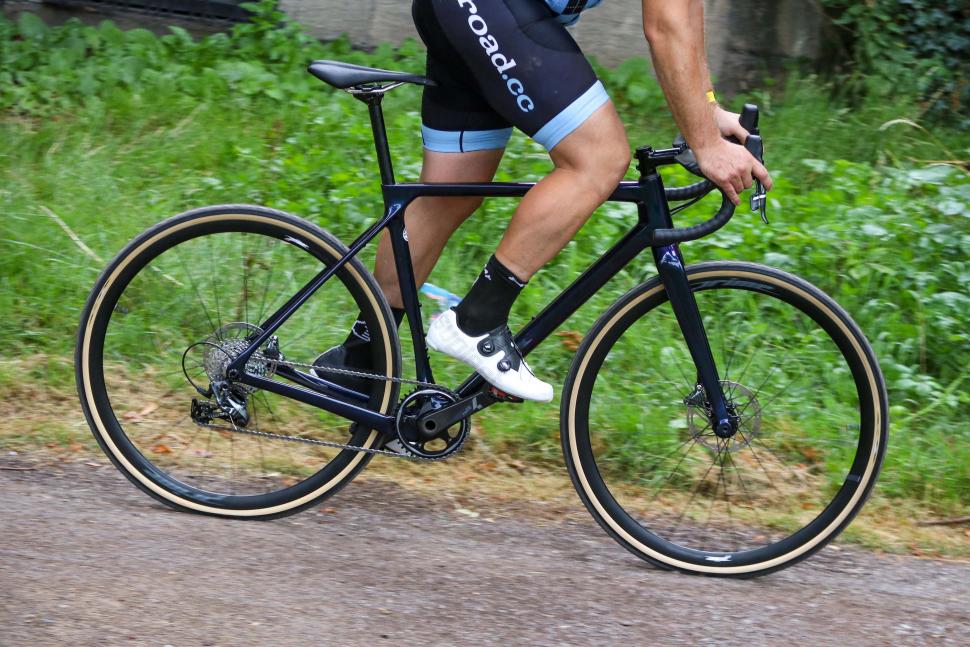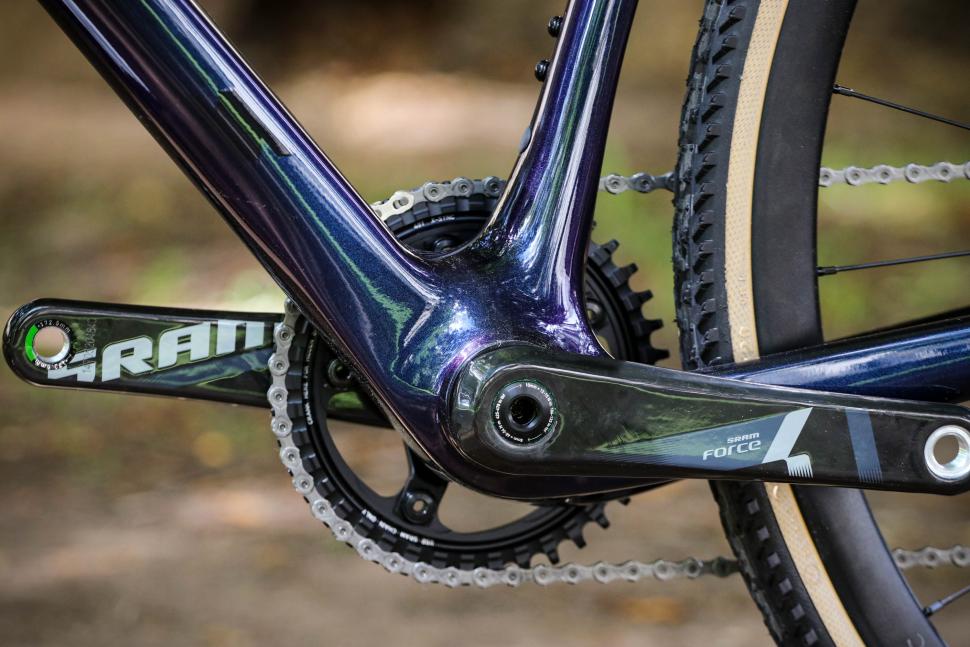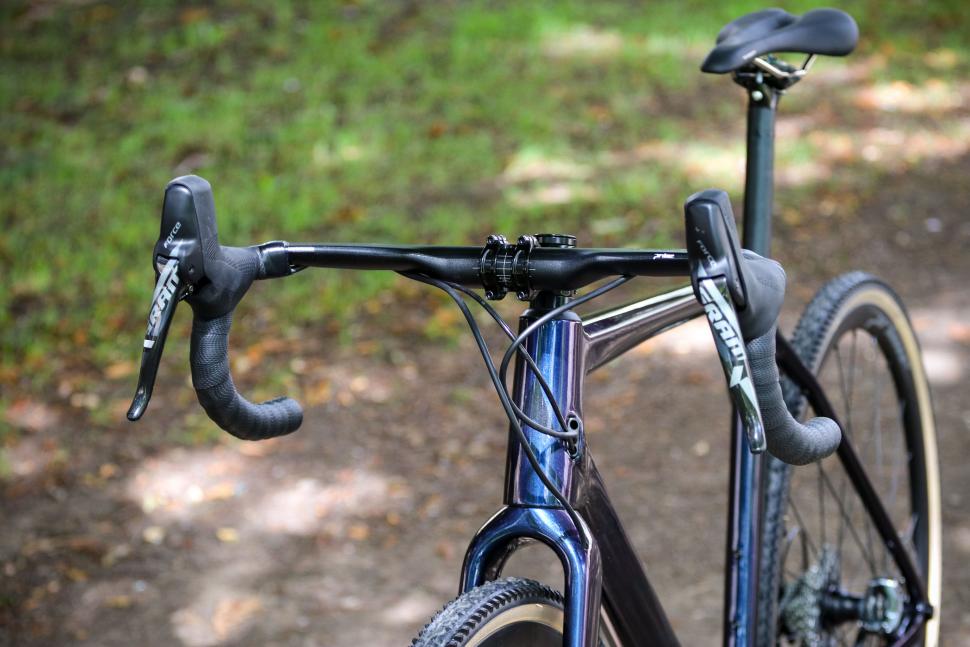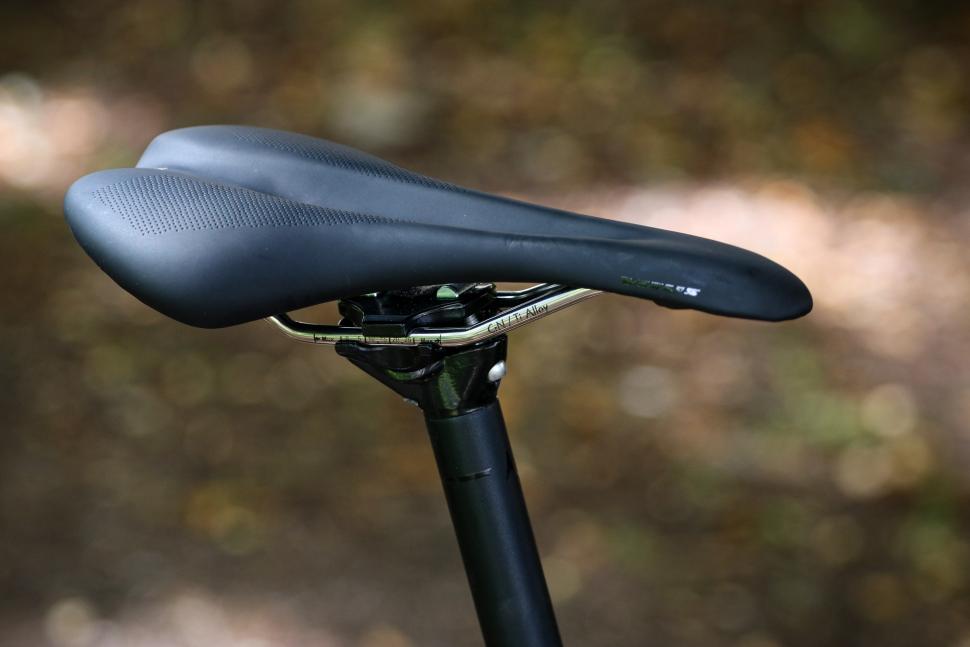- News
- Reviews
- Bikes
- Accessories
- Accessories - misc
- Computer mounts
- Bags
- Bar ends
- Bike bags & cases
- Bottle cages
- Bottles
- Cameras
- Car racks
- Child seats
- Computers
- Glasses
- GPS units
- Helmets
- Lights - front
- Lights - rear
- Lights - sets
- Locks
- Mirrors
- Mudguards
- Racks
- Pumps & CO2 inflators
- Puncture kits
- Reflectives
- Smart watches
- Stands and racks
- Trailers
- Clothing
- Components
- Bar tape & grips
- Bottom brackets
- Brake & gear cables
- Brake & STI levers
- Brake pads & spares
- Brakes
- Cassettes & freewheels
- Chains
- Chainsets & chainrings
- Derailleurs - front
- Derailleurs - rear
- Forks
- Gear levers & shifters
- Groupsets
- Handlebars & extensions
- Headsets
- Hubs
- Inner tubes
- Pedals
- Quick releases & skewers
- Saddles
- Seatposts
- Stems
- Wheels
- Tyres
- Health, fitness and nutrition
- Tools and workshop
- Miscellaneous
- Cross country mountain bikes
- Tubeless valves
- Buyers Guides
- Features
- Forum
- Recommends
- Podcast
TECH NEWS
 2020 Vitus Energie Evo - riding 5.jpg
2020 Vitus Energie Evo - riding 5.jpgFirst ride review: Vitus Energie Evo CRS
The cyclocross season is nearly upon us so it’s the perfect time for us to get our hands on the brand new Vitus Energie Evo CRS which has been completely redesigned for 2021. This isn’t a full review, it's a run through of my initial thoughts and findings. On the whole, they’re very positive.
Many people would have you believe that there's little difference between a cyclocross bike and a gravel bike apart from a good dose marketing. There is a big difference, though. Gravel/adventure bikes tend to be endurance orientated thanks to an extended wheelbase and relaxed handling whereas cyclocross bikes are designed for an hour of racing. The Energie Evo feels like a race bike.
Vitus has altered the Energie's geometry from that of previous versions, with a longer top tube and a shorter stem.
"This puts your hands and bodyweight in a superior position for stable and predictive steering through technical terrain," says Vitus.
I've been on the 56cm model which comes with a 582mm effective top tube. That's very long for a bike of this size. The seat tube (centre to centre) is 514mm and the head tube is 166mm. The stack on this size is 590mm and the reach is 406mm, giving a stack/reach of 1.45.
So far, I’ve ridden the Vitus on gravel tracks, by-ways and through the woods via some very twisty and technical trails which, thanks to the recent change in the weather, have become wet and muddy.
These conditions have really shown that the steering is quick and direct. As the Evo was sliding around on the relatively narrow 33m CX tyres (I’m more used to riding gravel bikes with 40mm+ rubber) the handling gets you out of a lot of trouble.
With loads of feedback from the frameset and the position that the overall geometry put me in, I could easily guide the Vitus around all kinds of obstacles. The fact that I could pre-empt where the front end would head allowed me to really keep the power on.
This’ll make a big difference on race day when you have to keep powering out of slow, muddy corners every lap.
Stiffness levels for delivering that power are also impressive thanks to the wide bottom bracket junction (it's BB386EVO standard), the bottom bracket itself, and suitably chunky chainstays. Out of the saddle, climbing doesn’t show any flex in that area at all.
Those chainstays I mentioned provide loads of mud clearance; Vitus reckons this is one feature that sets the Energie Evo apart from its rivals. The ability to ride longer without the build up of mud affecting your performance has to be good news when you're racing.
Dropped seatstays and an integrated clamp are intended to provide compliance while the underside of the top tube has been designed to be comfortable when you're shouldering the bike.
For this CRS model’s £2,499.99 price tag you are getting a decent level of kit, especially the SRAM Force 1x groupset.
It’s 11 speed with a 40T chainring and an 11-32T cassette which is definitely more compact than you’ll find on most gravel bikes.
The flat-section Prime Doyenne alloy handlebar gives plenty of hand positions and the Vitus saddle is comfortable too.
Overall, I’m impressed by the Vitus Energie Evo CRS so far and I’m looking forward to riding it in the events I’ve got coming up over the next few weeks.
Here's the full spec list:
FRAMESET Energie Evo Carbon
BOTTOM BRACKET SRAM 386EVO
GROUPSET SRAM Force 1X 11 Speed
CRANKSET SRAM Force 1 X-Sync 40T
CHAIN KMC X11
CASSETTE SRAM PG-1170 11-32 11 Speed
BRAKES SRAM Force 1 HRD
ROTORS SRAM Centreline Centrelock, F-160mm R-160mm
WHEELS Prime Baroudeur Disc Aluminium Climcher, Tubeless
TYRES Vee XCX 700x33 Tubeless
THRU-AXLE Vitus Switch F-100x12mm R-142x12mm
STEM Prime Doyenne Lightweight Alloy
HANDLEBAR Prime Doyenne Alloy
SEATPOST Vitus Alloy
SADDLE Vitus Ti Rail
I’ll be back with a full in-depth review towards the tail end of September with my findings about what the Vitus is like to live with and race on.
In the meantime, head over to vitusbikes.com for more details.
Since writing his first bike review for road.cc back in early 2009 senior product reviewer Stu has tested more than a thousand pieces of kit, and hundreds of bikes.
With an HND in mechanical engineering and previous roles as a CNC programmer/machinist, draughtsman and development engineer (working in new product design) Stu understands what it takes to bring a product to market. A mix of that knowledge combined with his love of road and gravel cycling puts him in the ideal position to put the latest kit through its paces.
He first made the switch to road cycling in 1999, primarily for fitness, but it didn’t take long for his competitive side to take over which led to around ten years as a time triallist and some pretty decent results. These days though riding is more about escapism, keeping the weight off and just enjoying the fact that he gets to ride the latest technology as part of his day job.
Latest Comments
- Steve K 15 min 14 sec ago
Some news coverage did mention bikes.
- Steve K 16 min 22 sec ago
On the other hand, Victoria always comes across as a very nice person.
- Tom_77 35 min 27 sec ago
I saw the following data for a local to me Speed Indicator Device (roadside sign that lights up to show vehicle speed) in a 30mph zone:...
- mdavidford 1 hour 18 min ago
I don't think there's anything natural about it....
- Blackthorne 1 hour 18 min ago
Not that I have any knife in this fight, but this sounds like lawyers finding new ways to enrich themselves under the guise of pretending to give...
- Blackthorne 1 hour 26 min ago
Here's an idea for you: two things can be true at once. Shock. The family is a bunch of censorious whiners, and, Rapha was flatly wrong.
- brooksby 1 hour 27 min ago
Its ridiculous, though: I do not for one moment believe that people drive onto Park Street and then park their car outside (or even, near) Woodes...
- Paul J 1 hour 25 min ago
The good olde beam type torque wrenches are cheaper and *much* more robust, no less accurate (least, at common bike tool price points), easier to...
- Steve K 1 hour 32 min ago
The OIadance open ear buds mentioned in this review don't seem to be available over here anymore. I killed my pair on a long ride last Thursday -...
- FionaJJ 2 hours 13 min ago
It's always worth remembering that very rarely does the person who writes the article also write the headline. This applies to a lot of fairly high...





Add new comment
1 comments
How does it ride on the road? If you need a bike mostly for road but have an occasional gravel habit, are you best off with
a) A road bike which can take wide tyres and a set of knobblier rubber for gravel use
b) A gravel bike with a spare set of slicks (but sub ideal geometry for the road)
c) A CX bike with a spare set of slicks?